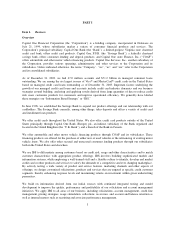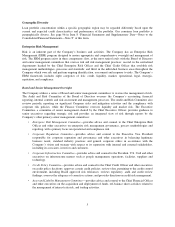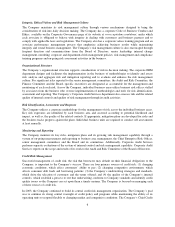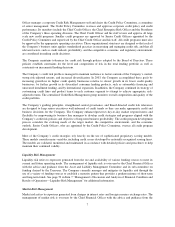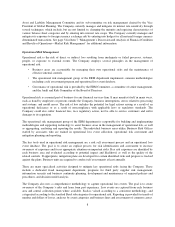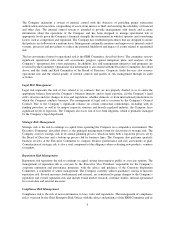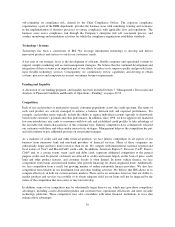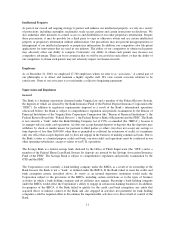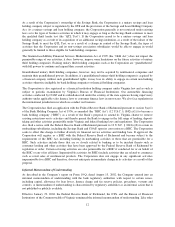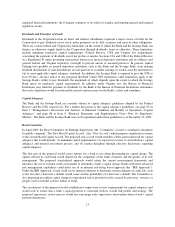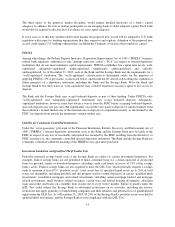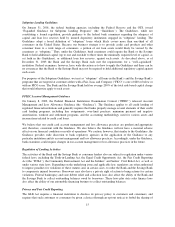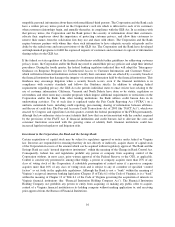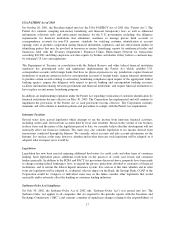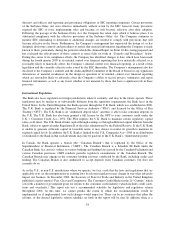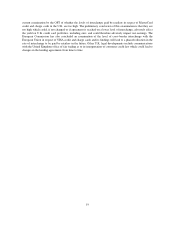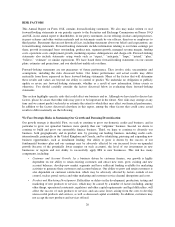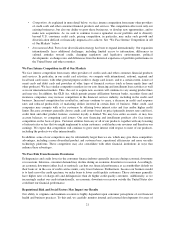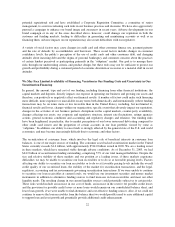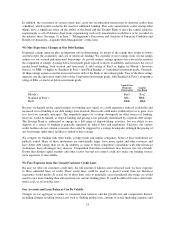Capital One 2003 Annual Report Download - page 31
Download and view the complete annual report
Please find page 31 of the 2003 Capital One annual report below. You can navigate through the pages in the report by either clicking on the pages listed below, or by using the keyword search tool below to find specific information within the annual report.regulated financial institutions, the Company continues to be subject to regular and ongoing general and targeted
regulatory exams.
Dividends and Transfers of Funds
Dividends to the Corporation from its direct and indirect subsidiaries represent a major source of funds for the
Corporation to pay dividends on its stock, make payments on its debt securities and meet its other obligations.
There are various federal and Virginia law limitations on the extent to which the Bank and the Savings Bank can
finance or otherwise supply funds to the Corporation through dividends, loans or otherwise. These limitations
include minimum regulatory capital requirements, Federal Reserve, OTS and Virginia law requirements
concerning the payment of dividends out of net profits or surplus, Sections 23A and 23B of the Federal Reserve
Act, Regulation W under governing transactions between an insured depository institution and its affiliates and
general federal and Virginia regulatory oversight to prevent unsafe or unsound practices. In general, federal
banking laws prohibit an insured depository institution, such as the Bank and the Savings Bank, from making
dividend distributions if such distributions are not paid out of available earnings or would cause the institution to
fail to meet applicable capital adequacy standards. In addition, the Savings Bank is required to give the OTS at
least 30 days’ advance notice of any proposed dividend. Under OTS regulations, other limitations apply to the
Savings Bank’s ability to pay dividends, the magnitude of which depends upon the extent to which the Savings
Bank meets its regulatory capital requirements. In addition, under Virginia law, the Bureau of Financial
Institutions may limit the payment of dividends by the Bank if the Bureau of Financial Institutions determines
that such a limitation would be in the public interest and necessary for the Bank’s safety and soundness.
Capital Adequacy
The Bank and the Savings Bank are currently subject to capital adequacy guidelines adopted by the Federal
Reserve and the OTS, respectively. For a further discussion of the capital adequacy guidelines, see page 55 in
Item 7 “Management’s Discussion and Analysis of Financial Condition and Results of Operations—Capital
Adequacy” and page 86 in Item 8 “Financial Statements and Supplementary Data—Note O—Regulatory
Matters”. The Bank and the Savings Bank were well capitalized under these guidelines as of December 31, 2003.
Basel Committee
In April 2003, the Basel Committee on Banking Supervision (the “Committee”) issued a consultative document
for public comment, “The New Basel Capital Accord,” (the “New Accord”) which proposes significant revisions
to the current Basel Capital Accord. The proposed new accord would establish a three-part framework for capital
adequacy that would include: (1) minimum capital requirements; (2) supervisory review of an institution’s capital
adequacy and internal assessment process; and (3) market discipline through effective disclosures regarding
capital adequacy.
The first part of the proposal would create options for a bank to use when determining its capital charge. The
option selected by each bank would depend on the complexity of the bank’s business and the quality of its risk
management. The proposed standardized approach would refine the current measurement framework and
introduce the use of external credit assessments to determine a bank’s capital charge. Banks with more advanced
risk management capabilities could make use of an internal risk-rating based approach (the “IRB Approach”).
Under the IRB Approach, a bank could use its internal estimates to determine certain elements of credit risk, such
as the loss that a borrower’s default would cause and the probability of a borrower’s default. The Committee is
also proposing an explicit capital charge for operational risk to provide for risks created by processes, systems, or
people, such as internal systems failure or fraud.
The second part of the proposal would establish new supervisory review requirements for capital adequacy and
would seek to ensure that a bank’s capital position is consistent with its overall risk profile and strategy. The
proposed supervisory review process would also encourage early supervisory intervention when a bank’s capital
position deteriorates.
13


